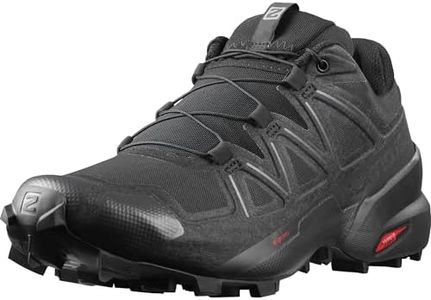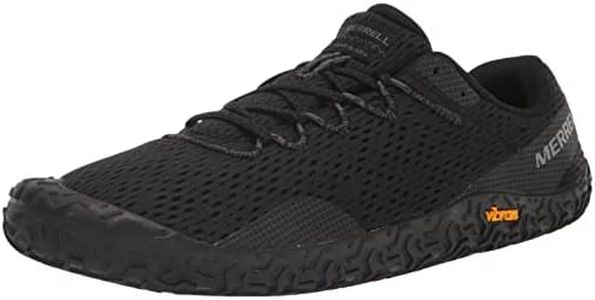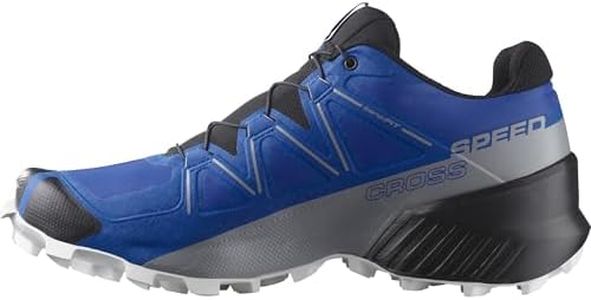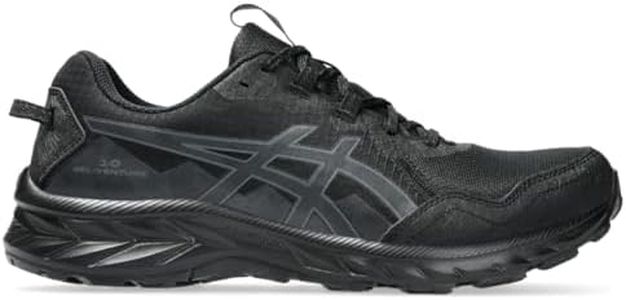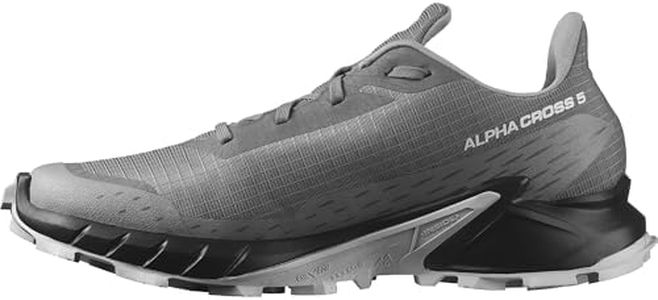We Use CookiesWe use cookies to enhance the security, performance,
functionality and for analytical and promotional activities. By continuing to browse this site you
are agreeing to our privacy policy
10 Best Trail Running Shoes For Men
From leading brands and best sellers available on the web.Buying Guide for the Best Trail Running Shoes For Men
Choosing the right trail running shoes is essential for comfort, safety, and enjoyment on off-road runs. Unlike regular running shoes, trail runners are designed for uneven terrain, rocks, mud, and roots. The proper pair helps prevent injuries and improves your overall trail experience. It's important to know which features to look at so you can pick a shoe that matches your running environment and personal preferences.Traction (Outsole Tread)Traction refers to how well the shoe can grip the surface of trails. The outsole tread is the bottom pattern with lugs or rubber projections. More aggressive treads with deeper lugs offer better grip on mud, loose rocks, and slippery surfaces, making them great for tough, technical trails. Milder treads are best for smoother, packed paths or light trails. Your choice depends on the type of trails you plan to run on most often. If you'll be on varied terrains, a balanced tread pattern is a versatile option.
CushioningCushioning is about how much padding is between your foot and the ground, affecting comfort and shock absorption. High cushioning is beneficial for long distances, rocky trails, or those needing extra foot protection. Low to moderate cushioning allows for a more connected feel with the ground, suiting runners who prefer agility and a lighter shoe. Consider how much comfort you want versus how much sensitivity to the ground you need – more rugged terrain or longer routes often require more cushioning.
Fit and SupportFit is crucial to avoid blisters and discomfort. Trail running shoes should hug your heel and midfoot, while offering enough room in the toe box for foot swelling over long runs. Support features, like a reinforced heel or overlays in the upper, help stabilize your foot on uneven ground. Some shoes offer wide or narrow options; always try them on (with your running socks) to ensure a secure, comfortable fit tailored to your foot shape and the kind of support you prefer.
Protection FeaturesTrail shoes might have rock plates (a firm insert) or reinforced toe caps to protect your feet from sharp rocks and debris. These features add some weight but are essential if you’ll run on very rocky or technical trails where protection from possible injuries is important. For smoother or softer trails, you might not need such heavy-duty protection.
WeightThe weight of the shoe determines how heavy or light it feels during your run. Lighter shoes help with speed and agility, which are great for racing or short, fast runs. Heavier shoes usually come with more protection and durability, suiting longer or rougher trail outings. Think about whether you want a fast, nimble feel or prioritize durability and foot safety for longer or rougher adventures.
Water Resistance and BreathabilitySome trail running shoes are waterproof or water-resistant, using special fabrics to keep your feet dry in wet or muddy conditions. However, waterproof shoes might not breathe as well, potentially making your feet hot or sweaty in dry, warm weather. Breathable shoes, on the other hand, let moisture and heat escape but can let water in easily. Choose water resistance for rainy, wet environments, and breathability for hot or dry climates.
Drop (Heel-to-Toe Offset)Drop is the difference in height between the heel and toe. Higher drop shoes (8mm-12mm) shift more impact to your heel and suit runners who land on their heels. Lower drop shoes (0-4mm) encourage landing on the midfoot or forefoot and can feel more natural to some runners. If you’re used to regular running shoes, a moderate drop is comfortable. If you prefer a minimalist, natural experience, a lower drop might be better, but make changes gradually to avoid injuries.







